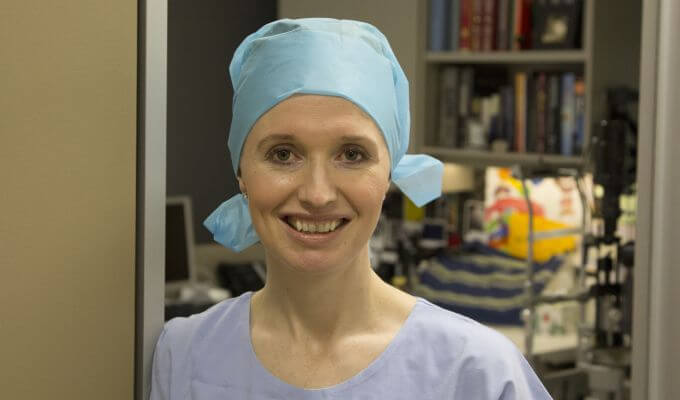A Biased View of Eye Checks
Table of ContentsEverything about Adult & Paediatric Eye SurgeryExcitement About Adult StrabismusThe Ultimate Guide To Comprehensive OphthalmologyEye Exam Can Be Fun For Anyone
Ophthalmologists are medical doctors who specialize in the diagnosis and treatment of eye and also vision problems. These three types of eye treatment professionals have instead similar-sounding names and overlapping work descriptions.They can not provide eye exams, write prescriptions, or identify or treat eye problems. can analyze your eyes, test your vision, recommend glasses or calls, and also detect as well as treat several eye problems and also conditions. They are not clinical doctors or cosmetic surgeons but can recommend certain eye-related drugs (https://cplusplus.com/user/drcrlinecatt/). also give eye exams, vision testing, as well as prescriptions for glasses or call lenses.

Ophthalmologists identify and also deal with injuries, infections, illness, and also problems of the eye. Treatments can include medicine taken by mouth (by mouth) or topically (in the eye), surgical treatment, cryotherapy (freeze therapy), as well as chemotherapy (chemical therapy). Eye doctors attend clinical institution after that receive a number of years of specialized training in the clinical and also medical care of the eye.
Some Known Details About Conjunctivitis
As they are the only doctor that can deal with all eye problems, eye doctors see a variety of eye problems, consisting of: Just how commonly should you have an eye examination? What are symptoms that indicate you may have an eye problem that requires to be inspected by an optometrist? The American Academy of Ophthalmology recommends: As youngsters's eyes are expanding and also changing quickly, they ought to obtain a vision testing.
Grownups who have healthy and balanced eyes and also excellent vision should have four comprehensive eye exams: one in their 20s, 2 in their 30s, and also one at age 40. These checkups might enable the ophthalmologist to capture an eye illness or vision modifications early on. By the time you see signs and symptoms, you might currently have some vision loss (COMPREHENSIVE OPHTHALMOLOGY).
:max_bytes(150000):strip_icc()/optometrist-vs-ophthalmologist-5094869_final-0d8eca1d944a4b54b1423065ac2e780f.jpg)
People who are at a greater risk of eye illness may require to get an eye exam more typically. After age 65, your eyes need to be inspected every one to two years.
Your view depends on seeing the best optometrist at the right time. When it's time to "obtain your eyes examined," ensure you are seeing the ideal eye treatment expert for your requirements. Ophthalmologists, optometrists and opticians each play an essential role in giving eye treatment to consumers. However the levels of training as well as know-how are quite various for each and every type of company.
More About Emergency Eye Problems

is a medical or osteopathic physician that specializes in eye as well as vision treatment. Ophthalmologists vary from optometrists and also opticians in their degrees of training and also in what they can detect and treat (https://www.seolinksubmit.com/author/drcrlinecatt/). As a medical physician that has actually finished university and at least eight years of added medical training, an ophthalmologist is certified to practice medicine and also surgery.
Several eye doctors are additionally associated with clinical research study on the causes and cures for eye diseases and vision problems. SUBSPECIALISTS: ADDITIONAL KNOWLEDGE AND TRAINING FOR PARTICULAR EYE requires While eye doctors are educated to look after all eye issues and also conditions, some Eye M.D.s focus on a specific area of clinical or surgical eye treatment.
He or she generally completes 1 or 2 years of added, extra comprehensive training called a fellowship in one of the primary subspecialty locations such as glaucoma, retina, cornea, pediatric medicines, neurology and plastic surgery, along with others. This added training as well as knowledge prepares an ophthalmologist take treatment of even more complicated or certain problems in particular areas of the eye or in certain teams of individuals.
An optometrist is not a medical doctor. An optometrist gets a doctor of optometry (OD) degree after finishing 4 years of optometry institution, preceded by 3 years or more years of college. They are accredited to exercise look at this now optometry, which primarily involves executing eye examinations and vision tests, prescribing and also giving rehabilitative lenses, identifying particular eye problems, as well as recommending medications for particular eye conditions.
Not known Facts About Conjunctivitis
They utilize prescriptions supplied by ophthalmologists or eye doctors, however do not check vision or compose prescriptions for aesthetic improvement. Lens are not allowed to identify or treat eye diseases. Most of us depend on our vision in even more manner ins which we may realize. Without healthy and balanced vision, our capacity to work, play, drive or perhaps acknowledge a face can be dramatically affected.
Having a family members participant with eye condition can make you much more prone to having that condition. Sight-stealing eye disease can show up at any moment. Very commonly they are unnoticeable initially as well as are tough to discover. That's why it is so important to see an eye doctor for a full clinical eye exam by age 40, and after that as frequently as suggested by your Eye M.D.
If you have any of these, make certain to go to an eye doctor. A full, clinical eye exam by an Eye M.D. can be the initial step toward saving your sight. Protruding of one or both eyes; Dark drape or veil that obstructs your vision; Decreased vision, also if momentary; Diabetes mellitus; Altered vision; Dual vision; Excess tearing; Eyelid problems; Household history of eye illness; Halos (tinted circles around lights); High blood pressure; HIV or AIDS; Injury to the eye; Loss of peripheral (side) vision; Misaligned eyes; New drifters (black "strings" or specks in the vision) and/or flashes of light; Discomfort in the eye; Thyroid disease-related eye troubles (Tomb' disease); Uncommon red eye.